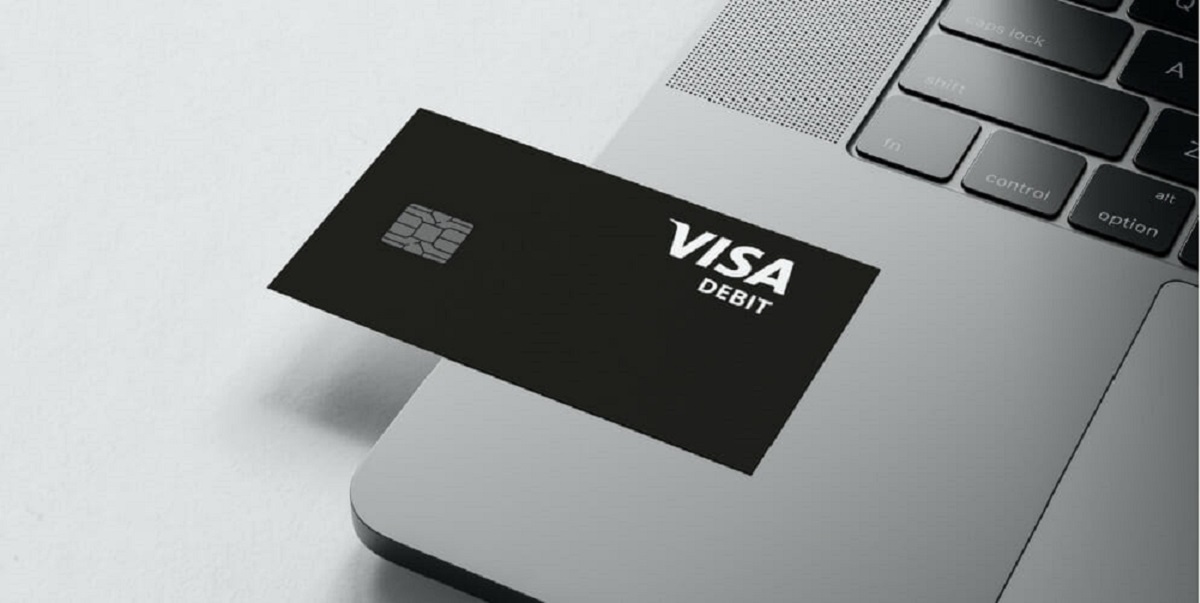Introduction
Welcome to the world of banking! As we navigate the realm of personal finances, it’s essential to understand the various tools and services available to us. One such tool is an external account, a feature that can greatly expand our banking options.
So, what exactly is an external account? In the simplest terms, it refers to a bank account that is held at a different financial institution than your primary or main bank. It allows you to manage your money across different banks, providing flexibility and convenience. External accounts offer a range of benefits that can make managing your finances easier and more efficient.
In this article, we will delve deeper into the world of external accounts. We will explore their different types, advantages, and the steps involved in opening one. We will also discuss how you can transfer funds to and from an external account, as well as the security measures in place to protect your financial information. Lastly, we will touch upon the limitations and potential risks associated with external accounts.
Whether you’re looking to diversify your banking relationships, simplify your financial management, or take advantage of higher interest rates, understanding external accounts is crucial. So, let’s get started by exploring the definition and different types of external accounts.
Definition of an External Account
An external account, also known as an external bank account or an external linked account, is a financial account that is held at a different bank or financial institution than your primary or main bank. It serves as an additional account that you can link to your main bank account, offering increased flexibility and convenience in managing your funds.
By establishing an external account, you can effectively connect multiple financial institutions and leverage the services and benefits they offer. This means you can have accounts with different banks or credit unions, all accessible through a centralized platform.
External accounts typically require you to link them to your main bank account, either through online banking or by providing authorization to transfer funds between them. Once linked, you can seamlessly transfer funds back and forth between your main bank account and the external account.
One important thing to note is that external accounts may have certain limitations. For example, there may be restrictions on the number of external accounts you can link, or there could be minimum balance requirements. It’s important to review the terms and conditions of both your main bank and the external bank to ensure you understand the limitations and any associated fees.
External accounts can be particularly beneficial for individuals who have multiple financial goals or preferences. For instance, you might have a savings account with a high-interest rate at one bank while maintaining a checking account with another bank that offers convenient ATM access. With an external account, you can manage both accounts seamlessly, maximizing the benefits of each.
In the next section, we’ll explore the different types of external accounts and how they can cater to specific financial needs and goals.
Types of External Accounts
External accounts come in various forms, each tailored to meet different financial needs and objectives. Understanding the different types of external accounts can help you choose the right one to fit your specific circumstances. Let’s explore a few common types:
- Savings Accounts: This type of external account allows you to save and earn interest on your funds. By linking a savings account to your main bank account, you can easily transfer money between the two, making it convenient to allocate funds for savings.
- Checking Accounts: External checking accounts provide you with a separate account for handling everyday transactions. By linking it to your primary bank, you have the flexibility to access and manage your funds without the need to open a new account at your primary bank.
- Investment Accounts: These accounts are designed for the purpose of investing in stocks, bonds, mutual funds, and other investment instruments. By linking an investment account to your main bank account, you can transfer funds and manage your investment portfolio seamlessly.
- CD (Certificate of Deposit) Accounts: CD accounts offer higher interest rates and fixed terms, making them ideal for long-term savings goals. With an external CD account, you can diversify your savings strategy while taking advantage of higher yield opportunities.
- Credit Card Accounts: Some banks offer the option to link external credit card accounts, allowing you to manage credit card transactions from different financial institutions in one place. This can be helpful for better tracking your expenses and making timely payments.
It’s important to note that the types of external accounts available may vary depending on the different banks or financial institutions. Some institutions may offer additional specialized accounts, such as retirement accounts or money market accounts, which can further enhance your financial management options.
Now that we have explored the different types of external accounts, let’s move on to the benefits of utilizing external accounts for your financial needs.
Benefits of External Accounts
Utilizing external accounts in your banking strategy offers several key advantages that can enhance your financial flexibility and convenience. Let’s take a closer look at the benefits of incorporating external accounts into your financial management:
- Flexibility and Diversification: One of the primary benefits of external accounts is the ability to diversify and manage your finances across different banks or financial institutions. This allows you to take advantage of unique features, higher interest rates, and specialized services offered by different institutions.
- Convenience and Accessibility: By linking external accounts to your main bank, you can access and manage your funds from a single platform, making it easier and more convenient to track your transactions and balances.
- Higher Interest Rates: External accounts may offer higher interest rates compared to traditional savings accounts, enabling you to maximize your savings potential and earn more on your deposits.
- Specialized Services: Some financial institutions specialize in certain areas, such as investments or credit cards. By utilizing external accounts, you can leverage these specialized services and take advantage of tailored offerings that suit your specific financial needs.
- Improved Budgeting: Managing multiple external accounts can provide a clearer picture of your spending and savings. By segregating funds into different accounts, such as a dedicated savings account or an account for monthly expenses, you can effectively allocate your funds and keep better track of your finances.
- Protection and Insurance: By diversifying your accounts across different banks, you can potentially benefit from increased deposit insurance coverage from government-backed programs, protecting your funds in case of unforeseen circumstances.
These benefits make external accounts an attractive option for individuals looking to optimize their financial management and make the most of their banking relationships. The convenience, flexibility, and potential for higher returns can help you achieve your financial goals effectively.
Next, we will explore the step-by-step process of opening an external account and the considerations you should keep in mind.
How to Open an External Account
Opening an external account is a straightforward process that typically involves a few simple steps. Although the specific requirements may vary between banks or financial institutions, the general process is as follows:
- Research and Choose a Bank: Begin by researching different banks or financial institutions that offer external accounts. Consider factors such as reputation, customer reviews, account features, and fees. Select a bank that aligns with your specific needs and preferences.
- Check Eligibility Requirements: Once you have chosen a bank, review the eligibility requirements for opening an external account. This may involve providing personal identification, proof of address, and other relevant documentation. Ensure that you meet the bank’s criteria before proceeding.
- Visit the Bank or Apply Online: Depending on the bank’s preferences, you may be able to apply for an external account either in-person at a branch or through their website. Complete the necessary application forms, providing accurate and up-to-date information.
- Provide Authorization: In order to link your external account to your primary bank, you will need to authorize the transfer of funds between the two accounts. This may involve providing your primary bank’s account details and granting permission to initiate transfers.
- Verify and Activate: Once your application has been received, the bank will review your information and may request additional documentation or information for verification. Once approved, you will receive the necessary account details and instructions to activate your new external account.
It’s important to note that while opening an external account is relatively straightforward, it’s essential to read and understand the terms and conditions associated with the account. Take note of any fees, minimum balance requirements, or limitations that may apply.
By following these steps, you can successfully open an external account and begin enjoying the benefits of expanded banking options. The next section will explore the process of transferring funds to and from an external account.
Transferring Funds to and from an External Account
Transferring funds to and from an external account is a vital aspect of managing your finances across multiple banks or financial institutions. Understanding the process ensures that you can seamlessly move money between your accounts when needed. Here’s a step-by-step guide on how to transfer funds to and from an external account:
- Linking Your External Account: To initiate transfers, you first need to link your external account to your main bank account. This is typically done through the online banking portal or by contacting customer service. Provide the necessary details of your external account, such as the bank name, account number, and routing number.
- Initiating Transfers to Your External Account: Once your external account is linked, you can transfer funds from your main bank account to your external account. This can be done either through the online banking platform or by visiting a branch. Specify the amount you wish to transfer and select the external account as the destination.
- Transferring Funds from Your External Account: When you need to move funds from your external account back to your main bank account, you can follow a similar process. Access your online banking portal or contact customer service to initiate the transfer. Specify the amount to be transferred and select your main bank account as the destination.
- Processing Time and Fees: Transfers between external accounts and main bank accounts typically take a few business days to process. Keep in mind that some banks may charge fees for these transfers, so it’s essential to be aware of any applicable charges.
- Monitoring and Tracking Transfers: Regularly monitor your bank accounts to ensure that transfers are successfully completed. Keep track of the transactions on your statements or through online banking tools to maintain accurate records of your financial activities.
- Utilizing Automatic Transfers: Many banks offer the option to set up recurring or automatic transfers between your main bank account and your external account. This can be useful for saving a portion of your income or ensuring regular transfers for specific financial goals.
By understanding the process of transferring funds to and from an external account, you can effectively leverage the benefits of having multiple accounts in different financial institutions. The next section will explore the security measures in place to protect your external account and ensure the safety of your financial information.
Security Measures for External Accounts
Ensuring the security of your external accounts is of utmost importance to protect your financial information and prevent unauthorized access. Banks and financial institutions have implemented various security measures to safeguard your account. Here are some common security measures you can expect for your external account:
- Secure Authentication: Banks employ multi-factor authentication methods, such as passwords, security questions, or biometric authentication, to verify your identity when accessing your external account. This helps prevent unauthorized access to your account.
- Encryption: Communication between your device and the bank’s servers is typically encrypted to secure the transmission of sensitive information, such as login credentials and transaction details, from potential eavesdropping or data breaches.
- Fraud Detection Systems: Financial institutions use sophisticated fraud detection systems that monitor account activities to identify and prevent suspicious or unauthorized transactions. These systems analyze transaction patterns and may place temporary holds or flag suspicious activities for further investigation.
- Alerts and Notifications: Banks offer account alerts and notifications via email, SMS, or mobile apps to keep you informed about any account activities or changes. These alerts can help you quickly identify and report any unauthorized transactions or suspicious activities.
- Secure Online Banking Platforms: Banks employ advanced security protocols and technologies to protect their online banking platforms from cyber threats. This includes secure sockets layer (SSL) certificates, firewalls, and regular security updates.
- Identity Theft Protection: Many financial institutions offer identity theft protection services as an added layer of security. These services monitor and notify you of any potential identity theft risks, helping you take preventive measures to protect your personal information.
- Customer Support and Assistance: Banks provide dedicated customer support teams to assist you with any security concerns or suspicious activities related to your external account. Promptly reporting any potential security breaches or unauthorized access to your account is crucial for resolving such issues.
While banks implement robust security measures, it’s essential for you to maintain good security practices as well. Protecting your login credentials, regularly reviewing your account activity, and updating your passwords are some additional steps you can take to strengthen the security of your external account.
By utilizing these security measures in conjunction with your own precautionary measures, you can confidently manage your external account with peace of mind. In the next section, we will discuss the limitations and potential risks associated with external accounts.
Limitations and Risks of External Accounts
While external accounts offer numerous benefits, it’s important to be aware of the potential limitations and risks involved. Understanding these aspects can help you make informed decisions and mitigate potential challenges. Let’s explore some of the common limitations and risks associated with external accounts:
- Account Restrictions: Some banks impose limitations on the number of external accounts you can link to your main bank account. This can affect your ability to manage multiple accounts with different institutions if there are restrictions in place.
- Minimum Balance Requirements: Certain external accounts may have minimum balance requirements that need to be maintained to avoid fees or account closure. It’s essential to be aware of these requirements and ensure you can meet them before opening an account.
- Transfer Fees: Transferring funds between your main bank account and your linked external accounts may incur fees. These fees can vary depending on the banks involved and the transfer methods used. It’s important to review the fees associated with transfers and consider them when managing your finances.
- Transaction Processing Time: Transfers between external accounts and main bank accounts may take a few business days to process. This delay can impact your ability to access funds immediately when needed, particularly in time-sensitive situations.
- Security Risks: While banks implement security measures, there is always some level of risk associated with financial transactions and online banking. It’s important to stay vigilant, maintain strong passwords, and promptly report any suspicious activities to your bank.
- Service Availability: There may be instances where the online banking services for certain external accounts are temporarily unavailable or face technical issues. This can impact your ability to access and manage funds during these periods.
- Potential Loss of Interest: If you divide your funds across multiple external accounts, you might miss out on maximizing the interest earned on a single account. It’s crucial to consider the interest rates and account balances when determining how to allocate your funds.
By being aware of these limitations and risks, you can make informed decisions when utilizing external accounts in your financial management. Regularly reviewing the terms and conditions of your accounts and staying updated on the banking policies can also help mitigate these risks.
Now that you are familiar with the limitations and risks of external accounts, let’s conclude our discussion on external accounts in the next section.
Conclusion
External accounts can be valuable tools in your financial toolkit, offering flexibility, convenience, and the ability to leverage the services of multiple banks or financial institutions. By understanding the definition, types, benefits, and considerations of external accounts, you can make informed decisions to optimize your financial management.
We explored how external accounts can help you diversify your banking relationships, access higher interest rates, and take advantage of specialized services. Opening an external account involves researching and selecting a suitable bank, meeting eligibility requirements, and linking the account to your main bank account.
Transferring funds to and from an external account is a straightforward process that allows you to move money seamlessly between your accounts. Security measures implemented by banks, such as secure authentication, encryption, and fraud detection systems, help protect your account and financial information.
While external accounts have numerous benefits, it’s important to be aware of their limitations and potential risks. These include account restrictions, minimum balance requirements, transfer fees, transaction processing time, security risks, service availability, and the potential loss of interest by splitting funds across multiple accounts.
By understanding these aspects and staying informed about the terms and conditions of your accounts, you can effectively navigate the world of external accounts and make the most of your banking relationships.
Remember to regularly evaluate your financial goals and needs to assess whether an external account aligns with your objectives. Consult with your bank, ask questions, and seek guidance if needed to ensure you make the right choices for your financial well-being.
So go ahead, explore the possibilities of external accounts and unlock the potential of managing your finances across multiple banks to enhance your financial flexibility and convenience.

























